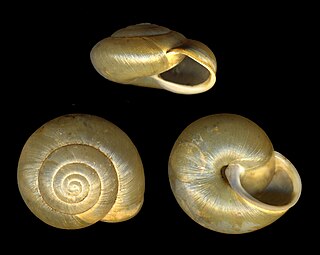
Diselma archeri is a species of plant of the family Cupressaceae and the sole species in the genus Diselma. It is endemic to the alpine regions of Tasmania's southwest and Central Highlands, on the western coast ranges and Lake St. Clair. It is a monotypic genus restricted to high altitude rainforest and moist alpine heathland. Its distribution mirrors very closely that of other endemic Tasmanian conifers Microcachrys tetragona and Pherosphaera hookeriana.

Archer's buzzard is a subspecies of the augur buzzard that is endemic to Somalia. The bird's common name and Latin binomial commemorate the British explorer and colonial official Sir Geoffrey Francis Archer.

The augur buzzard is a fairly large African bird of prey. This species is distinct in typical adult plumage for its blackish back, whitish underside and orange-red tail, while juvenile augur buzzards are generally rather brown in colour; however a dark morph is known, which causes the bird's entire body to become darker. This member of the Buteo genus is distributed in several parts of the central and southern Africa, normally being found from Ethiopia to southern Angola and central Namibia. It is resident and non-migratory throughout its range. This is a species of mountains, and adjacent savannah and grassland. This is a typical buteonine raptor, being a generalist predator which tends to prefer small mammals supplemented by reptiles and birds among various prey items.

Archer's lark, also known as the Liben lark, is a species of lark in the family Alaudidae. It is found in Somalia and Ethiopia. Its natural habitats are subtropical or tropical dry shrubland and subtropical or tropical dry lowland grassland. It is threatened by habitat loss. The bird's common name and binomial commemorate the British explorer and colonial official Sir Geoffrey Francis Archer.

Rudd's lark is a species of lark in the family Alaudidae. It is endemic to South Africa. Its natural habitat is high-altitude grassland. It is threatened by habitat loss.

Archer's ground robin or Archer's robin-chat, is a species of bird in the family Muscicapidae. It is found in the Albertine Rift montane forests.
The Magazine Mountain middle-toothed snail, also known as the Magazine Mountain shagreen, scientific name Inflectarius magazinensis, is a species of small, air-breathing, land snails, terrestrial pulmonate gastropod molluscs in the family Polygyridae.

Mesodon is a genus of land snails in the family Polygyridae.

Patera clenchi is a species of land snail in the family Polygyridae. It is endemic to Arkansas in the United States. Its common names include Calico Rock oval, Clench's middle-toothed land snail, and Mission Creek Oregonian.
Fumonelix jonesiana is a species of land snail in the family Polygyridae. Its common names are Jones' middle-toothed land snail and big-tooth covert. It is native to North Carolina and Tennessee in the United States, where it occurs in Great Smoky Mountains National Park.
The flat-spired three-toothed snail —also known as the Cheat three-toothed snail after the Cheat River in West Virginia—is a species of air-breathing land snail, a terrestrial pulmonate gastropod mollusk in the family Polygyridae.

Polygyridae is a family of air-breathing land snails, terrestrial pulmonate gastropod mollusks in the superfamily Helicoidea.

Euchemotrema is a genus of small, air-breathing land snails, terrestrial pulmonate gastropod mollusks in the family Polygyridae.

Protorothyris is an extinct genus of Early Permian protorothyridid known from Texas and West Virginia of the United States. It was first named by Llewellyn Ivor Price in 1937 and the type species is Protorothyris archeri. P. archeri is known from the holotype MCZ 1532, a three-dimensionally preserved skull and from the referred specimens, which come from four additional individuals, MCZ 2147-2150. All specimens were collected in the Cottonwood Creek site, from the Archer City Formation, Texas, dating to the Asselian stage of the Cisuralian epoch, about 299–294.6 million years ago. A second species, P. morani, was first named by Alfred Sherwood Romer in 1952 with its own generic name, Melanothyris. In 1973, J. Clark and Robert L. Carroll recombined P. morani as a Protorothyris species. It is known from the holotype CM 8617, a three-dimensionally preserved skull. It was collected in the Blacksville site, from the Washington Formation of West Virginia. Protorothyris was the size of the average lizard, about 30 cm in length.

Mesodon thyroidus is a species of air-breathing land snail, a terrestrial gastropod mollusk in the family Polygyridae.
Fumonelix is a genus of small, air-breathing, land snails, terrestrial pulmonate gastropod molluscs in the family Polygyridae.

Eucalyptus archeri, also known as alpine cider gum, is a mallee or a small tree that is endemic to Tasmania. It has smooth white or greyish bark, lance-shaped adult leaves, flower buds in groups of three, white flowers and conical to barrel-shaped fruit. It intergrades with E. gunnii.

Carex archeri, known as Archer's sedge, is a species of sedge in the genus Carex, endemic to south-eastern Australia.













